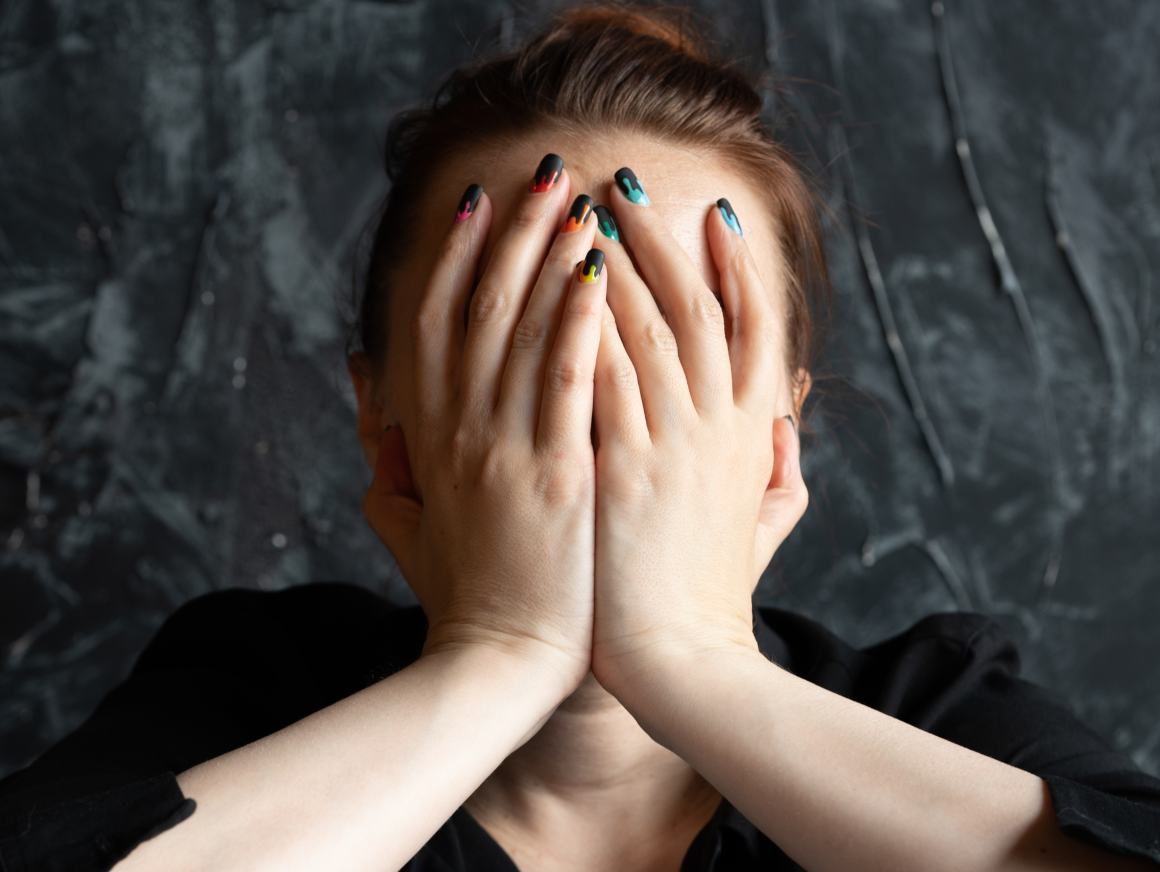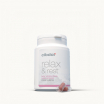What do anxious thoughts look like?
Published:
Anxiety is a common mental health condition that affects millions of people worldwide. It is characterized by excessive, difficult-to-control worry and apprehension about various aspects of life. One of the hallmark symptoms of anxiety is anxious thoughts, which can be constant, intrusive, and often catastrophic in nature. But what exactly do anxious thoughts look like and what forms can they take? This article will explore the various manifestations of anxious thoughts to shed light on this key component of anxiety disorders.
Contents:
- The Definition and Types of Anxious Thoughts
- Common Physical Manifestations
- Thought Patterns and Psychological Features
- Common Thought Content
- Factors That Can Trigger or Worsen Anxious Thoughts
- The Impact of Anxious Thoughts on Daily Life
- Treatment Options for Anxious Thoughts
- Helpful Strategies for Coping with Anxious Thoughts
- Conclusion

The Definition and Types of Anxious Thoughts
Anxious thoughts refer to excessive worrying or rumination about potential threats, dangers, or uncertain outcomes. These thoughts are usually focused on the possibility of something bad happening, such as failing at work, becoming seriously ill, or losing a loved one.
There are several different types of anxious thoughts:
Obsessive Thoughts
These are recurring, unwanted thoughts or mental images that the person finds distressing or even repulsive. Common examples include obsessive thoughts about contamination, accidents, impulses, and doubts about relationships or actions.
Worrying thoughts
This refers to fretting endlessly about worst-case scenarios like bankruptcy, danger befalling loved ones, or catastrophic events. The worrier becomes preoccupied with “what if” thinking.
Catastrophic thoughts
These involve imagining or predicting dire outcomes as highly likely or inevitable when this is not the case. Catastrophic thinkers automatically assume the worst will happen.
Rumination
This involves compulsively thinking about past failures, errors, imperfections, or fears without being able to let them go. The ruminator gets stuck in repetitive loops rehashing what went wrong.
Common Physical Manifestations
In addition to the mental experience, anxiety and anxious thoughts often manifest physically in the following ways:
- Muscle tension from chronic stress
- Headaches from frowning, jaw clenching, or neck tightness
- Fatigue from poor sleep caused by rumination
- Edginess from excess adrenaline and cortisol
- Restlessness or agitation from feeling keyed up
- Trembling or shaking from hyperarousal
- Nausea or dizziness from tension or panic symptoms
- Sweating or chills related to the fight-or-flight response
Thought Patterns and Psychological Features
Anxious thoughts have distinct patterns, Habits, and features that set them apart from normal concern. These include:
Negative bias
There is an inherent negativity bias where the anxious thinker expects the worst outcome in any situation and minimizes or dismisses positive probabilities.
Exaggeration
The person prone to anxiety tends to blow risks and potential problems out of proportion. Small risks become catastrophes; uncertainties become certainties.
Perseveration
Anxious thoughts are persistent and rigid. The person has trouble redirecting their attention away from the worry topic and onto more positive or neutral subjects.
Perfectionism
Black and white thinking prevails, with perfection the goal and anything less than perfect deemed a failure. This breeds self-criticism.
Magical thinking
This involves believing one’s thoughts and worries can somehow influence outcomes in reality or a sense of superstition. “If I keep thinking this, it’ll happen.”
Mind reading
The anxious thinker feels they can determine what others are thinking negatively about them with no objective evidence. “My boss thinks I’m incompetent.”
Emotional reasoning
Here, the person draws conclusions about themselves or situations based on their feelings instead of facts. “I feel guilty, so I must have done something wrong.”
Common Thought Content
While anxious thoughts come in many themes, some examples of common worrisome thought content include:
- Health and illness (e.g. a headache means brain tumor)
- Public embarrassment or humiliation
- Financial ruin or poverty
- Failure at school, work, parenthood, or relationships
- Being rejected or abandoned
- Losing mental capacities
- Inability to cope with day-to-day responsibilities
- Global catastrophes, disasters, crime, or terrorism
- Conflict and confrontation with others
- Accidents, injuries, danger and safety
Factors That Can Trigger or Worsen Anxious Thoughts
Many factors can exacerbate anxious thinking patterns, including:
- Stress - at work, school, home, financially, etc.
- Life changes - e.g. new job, baby, marriage, bereavement
- Trauma or adverse childhood experiences
- Medical issues or physical health problems
- Dietary triggers like excess caffeine
- Sleep deprivation or insomnia
- Drug or alcohol abuse as a coping mechanism
- Withdrawal from anxiolytics on cessation
- Coexisting conditions like depression that amplify anxiety
- Learned tendencies - e.g. growing up with anxious role models
- Environmental cues - places, times, situations
The Impact of Anxious Thoughts on Daily Life
When anxious thoughts become unmanaged or severe, they can significantly interfere with daily functioning and quality of life. Common impacts include:
Impaired concentration
The constant intrusion of worried thoughts can make it extremely difficult to focus at work or school. Productivity and performance suffer when attention is so fractured.
Avoidance
Anxious individuals may avoid any situation that triggers their anxious thoughts - e.g. social events, driving, flying. This leads to increasing isolation.
Poor decision-making
The negative thinking patterns of anxiety leave little room for weighing actual risks and benefits when making choices. Decisions are biased towards the worst case scenario.
Relationship conflicts
Anxiety can cause interpersonal friction due to decreased intimacy, social withdrawal, hostility stemming from stress, or attempts by loved ones to alleviate the person’s unfounded worries.
Sleep disruption
The ruminating quality of anxious thoughts leads many people with anxiety to experience insomnia, poor sleep quality, and exhaustion.
Substance abuse
Some attempt to self-medicate their anxiety with alcohol, prescription meds, or recreational drugs. This only serves to compound problems.
Poorer physical health
Chronic anxiety correlates to weakened immune function, heart disease, headaches, hormone changes, and aging acceleration due to prolonged stress reactions.
Treatment Options for Anxious Thoughts
If anxious thoughts become unmanageable or severely impair life, it is advisable to seek professional treatment. Effective options include:
Medications
- Anti-anxiety meds like benzodiazepines for crisis relief
- Long-term SSRIs or SNRIs to control symptoms
- Beta blockers for specific situational anxiety triggers
Psychotherapy
- Cognitive behavioral therapy to change negative thought patterns
- Exposure therapy to reduce avoidance behaviors
- Acceptance and commitment therapy to reduce rumination
- Dialectical behavior therapy for emotion regulation skills
Mind-body practices
- Mindfulness and meditation to train focus away from worries
- Yoga and breathing exercises to reduce muscle tension
- Exercise and movement to burn off nervous energy
Support groups
- Group therapy provides validation and support
- Peer support fosters understanding from others with anxiety
Lifestyle changes
- Stress management through better work-life balance
- Set aside time for hobbies and socializing
- Reduce caffeine and other dietary triggers
- Focus on proper sleep habits and hygiene
Helpful Strategies for Coping with Anxious Thoughts
Alongside professional treatment, those struggling with anxiety can try self-help strategies like:
- Fact-checking worries against reality to gain perspective
- Making lists and plans to feel prepared and in control
- Talking to trusted friends or family who can challenge distorted thinking
- Keeping a thoughts log to identify patterns
- Limiting time spent dwelling on worries
- Practicing mindfulness and staying focused on the present moment
- Doing grounding exercises when becoming overwhelmed
- Exercising daily to improve mood and lower tension
- Maintaining a consistent calming bedtime routine
- Trying creative approaches like art therapy or music to interrupt ruminations
Conclusion
Anxiety is largely fueled by irrational, worst-case scenario thoughts that leave individuals feeling overwhelmed and out of control. Understanding the manifestations, thought patterns, symptoms, and life impact of chronic anxious thinking allows for better management. Professional treatment combined with self-directed coping strategies can help reframe thought content, reduce avoidance behaviors, improve quality of life, and overcome anxiety. With persistence and the right help, peace of mind is possible, even for those whose minds have tended to be dominated by fear and apprehension.
Resources used to write this article
National Institute of Mental Health. (2022). Anxiety Disorders. https://www.nimh.nih.gov/health/topics/anxiety-disorders
This site from the NIMH provides an overview of anxiety disorders, their symptoms, causes, and treatment options.
American Psychiatric Association. (2013). Diagnostic and statistical manual of mental disorders (5th ed.). https://doi.org/10.1176/appi.books.9780890425596
The DSM-5 contains clinical descriptions of anxiety disorders and their diagnostic criteria.
Anxiety and Depression Association of America. (2022). Facts & Statistics. https://adaa.org/understanding-anxiety/facts-statistics
This site has statistics on the prevalence of anxiety disorders and their societal costs and impact.
Bourne, E.J. (2015). The Anxiety and Phobia Workbook. New Harbinger Publications.
This book discusses anxious thought patterns and provides cognitive-behavioral strategies to overcome anxiety.
Barlow, D.H. (2014). Clinical handbook of psychological disorders: A step-by-step treatment manual. Guilford Publications.



















